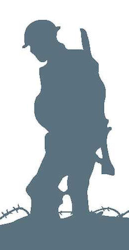Name
James Puttefoot (Born Harold Howard Bivand)
Conflict
First World War
Date of Death / Age
25/01/1915
23
Rank, Service Number & Service Details
Lance Corporal
11135
Welsh Regiment
2nd Bn.
Awards: Service Medals/Honour Awards
Not Yet Researched
Cemetery/Memorial: Name/Reference/Country
LE TOURET MEMORIAL
Panels 23 and 24
France
Headstone Inscription
NA
UK & Other Memorials
Not on the Watford memorials, Not on the Barnet memorials
Pre War
James was born Harold Howard Bivand on 17th of February 1892 in Barnet and baptised 5th of June 1892 at All Saints, Croxley Green. His parents were Charles and Sarah Ann (nee Howard) Bivand who married 17th of May 1891 at All Saints. In 1891 Sarah’s parents, George and Caroline, were living The Mill Square, Croxley with four children and a nephew. George, two of the children (including Sarah), and the nephew were all Paper Makers, presumably at Dickinsons Mill. Charles and Sarah appear to have lived in Croxley from c1894 to c1900 as four of their children were born there between those dates. In 1901 they were at 35 Bruce Road, Barnet, and in 1911, with their eleven children, at 23 Sandown Road, South Norwood. James, age 19, was listed on the census as Harold Howard Bivand, RAMC.
On the 1911 census James, while living at home, is in the Royal Army Medical Corps under his given name of Harold Howard Bivand. When and why he joined the Welsh Regiment under the name James Puttefoot is not known.
Officially recorded as born in Watford and was living there when he enlisted in London.
Wartime Service
Enlisted in London.
The 2nd Welsh was a regular Battalion, part of 3rd Brigade, 1st Division which landed Le Havre 13th of August 1914, although James did not go to France until 24th of November.
In 1914 the Battalion fought at Mons and the subsequent retreat, and the Battles of The Marne, Aisne and First Ypres. James was killed in action and, although the details are not known, this was probably at the First Action of Givenchy which took place on the 25th of January 1915. On that day a German soldier deserted and disclosed that an attack was imminent against Cuinchy. French positions to the south, and Givenchy. About 90 minutes later units of the German 79th Brigade of VII Corps attacked on the north bank of the canal near Givenchy. Their infantry units reached strong points behind the support line but could not progress further. A hastily organised counter attack by Battalions of 3rd Brigade 1st Division recaptured the British trenches.
Acknowledgments
Mike Collins



